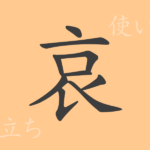“
Each Japanese kanji character has its own unique history and meaning. In this article, we spotlight the kanji “”亜”” (A), exploring its origins, meanings, usage, and even its appearances in phrases and idioms. We also delve into how “”亜”” is used in compounds and proverbs, fully uncovering the allure of this character.
Origins of 亜 (A)
The kanji “”亜”” traces back to ancient China, originally used to mean “”second”” or “”next,”” and its design reflects the concept of being “”second in standing.”” Over time, it has come to be used in various contexts, such as the “”A”” in “”Asia”” and “”to follow,”” playing a significant role in people’s lives and culture from early times.
Meaning and Usage of 亜
The kanji “”亜”” primarily means “”to follow,”” “”A of Asia,”” and “”second.”” It is frequently used to denote “”Asia.”” Additionally, it appears in scientific and geographical terms like “”zinc”” (亜鉛 (Aen)) and “”subtropical”” (亜熱帯 (Anettai)), where it conveys meanings of “”subordinate”” or “”secondary.”” Thus, “”亜”” has a wide range of uses across various fields.
Readings, Stroke Count, and Radical of 亜
- Readings: On-reading is “”ア”” (A), no Kun-reading
- Stroke Count: 7 strokes
- Radical: 二 (Ni, futatsu – “”two””)
Phrases, Idioms, and Proverbs Using 亜
There are several phrases and idioms that include the kanji “”亜,”” such as:
- 亜鉛 (Aen): A metal element used for corrosion resistance.
- 亜熱帯 (Anettai): A climatic zone between the tropics and temperate zones.
- 亜細亜 (Asia): Means “”Asia,”” often referring broadly to the Orient.
- 亜流 (Aryu): A derivative stream, metaphorically used to describe unconventional methods or ideas.
Summary on 亜
The kanji “”亜”” has been used in various meanings and applications through history, especially symbolizing “”Asia”” and in scientific and geographical contexts. The phrases and idioms containing “”亜”” highlight the richness of the Japanese language. We hope this article has deepened your understanding of the versatility and charm of “”亜.””
“
























